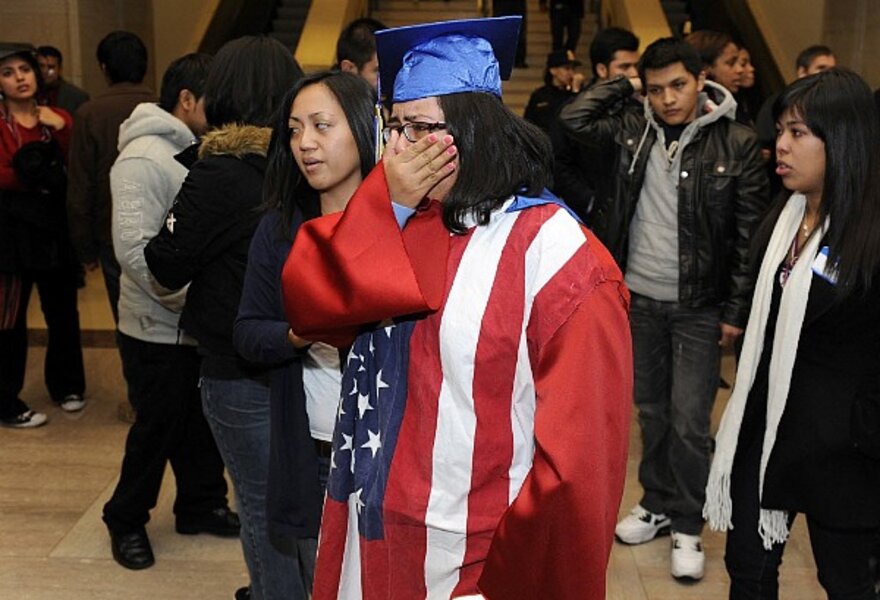DREAM Act for minors in the US illegally stopped in the Senate
Loading...
The dream has died, at least for now.
That’s the DREAM Act, which would have created a way to citizenship for young people who were brought into the United States illegally while minors.
The House had passed the bill, but on Saturday a Senate vote to cut off debate failed 55-41 on a largely party-line vote, essentially killing the legislation for this year. (Sixty votes were needed to end floor debate.) And with Republicans taking over the House and gaining seats in the Senate as a result of the recent midterm elections, prospects for the DREAM Act have dimmed considerably.
Quiz: Could you pass a US citizenship test?
In a statement, President Obama called it “an incredibly disappointing vote.”
The Obama administration had pushed hard for the law – mainly as an education bill that would eventually bring economic benefits to the country.
First introduced ten years ago, the bill (whose full title is the Development, Relief and Education for Alien Minors Act) would have allowed minors in the US illegally to stay in the country temporarily if they were under the age of 30, had lived in the US continuously for at least five years, and had been brought to this country before they were 16 years old.
Having earned a high school diploma, GED, or college acceptance, plus having undergone background checks, they would then be able to gain permanent resident status – and apply for citizenship – after 10 years and after completing two years of college or military service.
Educators were generally for it, including at least 29 higher-education associations and the presidents and chancellors at more than 73 colleges and universities. Nearly 400 university professors who study immigration had signed a statement endorsing the act.
"Let us consider the alternative to legalizing DREAM Act-eligible young people," Rep. Luis Gutierrez, (D) of Illinois, one of the bill’s leading sponsors, had said last week. "The young men and women eligible for the DREAM Act will still live here but can only take jobs in the black market, probably cannot afford the high costs we charge foreign students for a college education, and are barred from serving in the military."
But education aside, the bill also was seen as a major shift in immigration policy, and Saturday’s action is a major defeat for reform there.
Opponents saw it as the thin edge of a wedge leading to amnesty for illegal immigrants, estimated to number 11 million in the United States, according to the Pew Hispanic Center.
"With the DREAM Act and other amnesty proposals off the table, the [next] Congress will have an opportunity to implement immigration reforms that place the interests and concerns of the American people ahead of those of illegal aliens,” said Dan Stein, president of the Federation for American Immigration Reform (FAIR), in a statement Saturday.
In his reaction Saturday, Obama noted that the non-partisan Congressional Budget Office had estimated that the law would have cut the federal deficit by $2.2 billion over the next 10 years – mainly through taxes paid by immigrants who would get better jobs as a result of having been educated under the DREAM Act.
That conclusion has been disputed by other immigration analysts.
The Center for Immigration Studies in Washington recently estimated that about one million illegal immigrants would eventually enroll in public institutions (state universities or community colleges) as a result of the DREAM Act, and that each one would receive a tuition subsidy from taxpayers of nearly $6,000 per year for a total cost of $6.2 billion a year.
“Any hoped-for tax benefit is in the long-term, and will not help public institutions deal with the large influx of new students the act creates in the short-term,” the center reported. “Because college dropout rates are high, many illegal immigrants who enroll at public institutions will not complete the two years the act requires, so taxpayers will bear the expense without a long-term benefit.”





